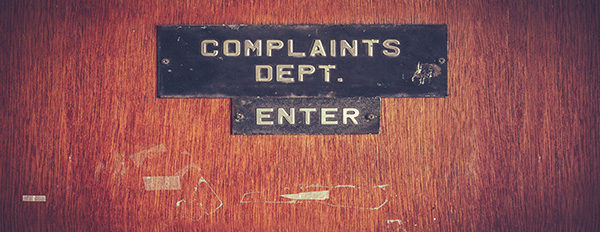Does an employee have to fill out a “complaint form” and hand deliver it to Human Resources for it to be considered an official complaint? Does a complaint have to be in writing to be considered legitimate? Can a co-worker make a complaint related to something she has witnessed in the workplace? Should an anonymous comment in an employee survey be acted upon by management? Do social media postings count as employee complaints? These are questions management should know the answers to.
Long gone are the days where the only way to file a complaint was to complete a form and submit it to the appropriate parties. Complaints come in many different form through a variety of vehicles and need to be handled seriously.
Whether you are a manager, Human Resources professional, owner, all of the following scenarios put the employer on notice and should be handled in the same manner as a formal written complaint:
- An employee approaches you and says, “I am kind of uncomfortable around Joe because of the things he says, but I don’t want you to talk to him. Just take me off his shift.”
- An employee complained to you in the past but submitted her resignation letter last week and is no longer with the company.
- An employee complains about a customer making racist comments towards her.
- You overhear a conversation between coworkers in the lunchroom where somebody complains about a joke that really offended him.
- An employee complains to you but doesn’t want to make a big deal about it and doesn’t want any kind of investigation.
- In a recent employee survey, an anonymous participant writes “All of the old people are getting pushed out of marketing.”
- On your company GlassDoor page, a current employee anonymously posts “Don’t apply for job here because the company tolerates sexual harassment.”
- A Sales Manager tweets “during the conference I had to save one of our drunk sales reps from being assaulted by a sales leader.”
The legal standard is that management “knew or should have known” about discrimination or harassment in the work environment. This can feel overwhelming – how can you stay abreast of every social media post or comment made in a break room? Following are some best practices to stay informed:
- Educate leaders about their responsibility and the variety of ways an employee complaint can be made;
- Manage by ‘walking around.’ There is still no substitute for leadership presence in the work environment to create an open-door environment and ensure transparency around what is happening in the work environment.
- Hold town hall meetings or listening sessions to hear firsthand what is on employee’s minds;
- Conduct skip-level meetings with employees;
- Assign someone in marketing or human resources to keep tabs on sites like GlassDoor and Indeed;
- Conduct a culture survey;
- Implement an Ethics Hotline or Ombuds program;
- Communicate your code of conduct, reporting process and anti-retaliation policy to employees.
The best defense to protect your organization is a strong offense – be aware, be open, and immediately address concerns when they arise to mitigate issues in the workplace.

